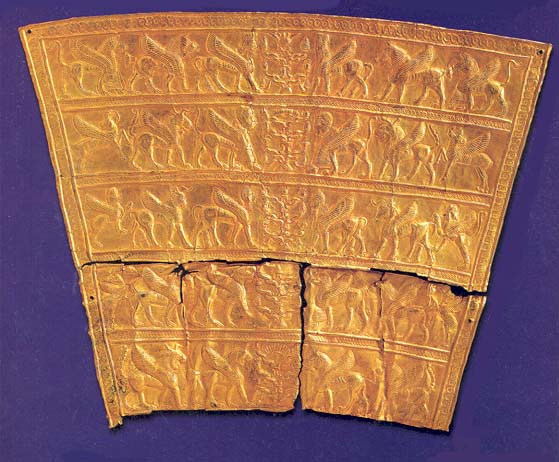
A parade of bizarre creatures marches across this eighth- to seventh-century B.C.E. gold plaque, reportedly discovered inside a coffin buried in an ancient mound near the village of Ziwiye, in northeastern Iran. The richness of the burial goods has led some to speculate that the bronze coffin belonged to an Assyrian prince or lord. The plaque’s perforated edge suggests that it was originally attached to the corpse’s clothing or shroud. The designs on the 8-by-10-inch plaque were created with both repoussé work (hammering from behind) and chasing (indenting with a blunt tool).
A wave-like guilloche pattern separates the five registers of the plaque, now in the Metropolitan Museum of Art in New York (two more registers of the same plaque reside in the Archaeological Museum of Teheran). Each band features two groups of hybrid creatures converging on stylized trees of life that bear pomegranates, lotus flowers and pine cones.
Winged lions sprout ostrich tail feathers (top row, second from left and right) and horns and scorpion tails (second row, second from left and right). Winged ibex bring up the rear of the second row. Human-faced winged lions flank the trees in the first and third registers.
Already a library member? Log in here.
Institution user? Log in with your IP address.

